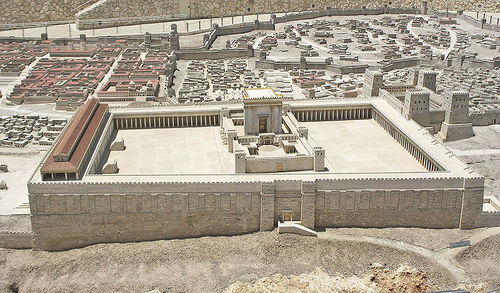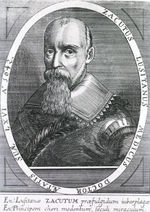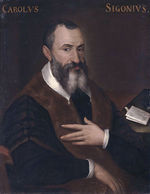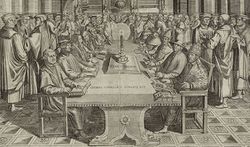Difference between revisions of "Category:Second Temple Studies--1500s"
(Created page with "thumb|200px|Paul Eber * BACK to the SECOND TEMPLE STUDIES--INDEX '''Second Temple Studies in the 1500s--Works and...") |
|||
| (55 intermediate revisions by the same user not shown) | |||
| Line 1: | Line 1: | ||
[[File: | {| style="margin-top:10px; background:none;" | ||
| style="background:white; width:65%; border:1px solid #a7d7f9; vertical-align:top; color:#000; padding: 5px 10px 10px 8px; -moz-border-radius: 10px; -webkit-border-radius: 10px; border-radius:10px;" | | |||
<!-- ===================== COLONNA DI SINISTRA ==================== --> | |||
{| cellpadding="2" cellspacing="5" style="width:100%; vertical-align:top; background:transparent;" | |||
{{WindowMain | |||
|title= [[Second Temple Studies]] ([[1500s]]) | |||
|backgroundLogo= Bluebg_rounded_croped.png | |||
|logo= history.png | |||
|px= 38 | |||
|content= [[File:Second Temple.jpg|500px]] | |||
The page: '''Second Temple Studies--1500s''', includes (in chronological order) scholarly and literary works in the field of [[Second Temple Studies]], made in the [[1500s|16th century]], or between 1500 and 1599. | |||
[[File:Abraham ben Samuel Zacuto.jpg|thumb|150px|[[Abraham ben Samuel Zacuto]]]] | |||
[[File:Paul Eber.jpg|thumb|150px|[[Paul Eber]]]] | |||
[[File:Carlo Sigonio by Follower of Bartolomeo Passerotti.jpg|thumb|150px|[[Carlo Sigonio]]]] | |||
}} | |||
{{WindowMain | |||
|title= Highlights ([[1500s]]) | |||
|backgroundLogo= Bluebg_rounded_croped.png | |||
|logo = contents.png | |||
|px= 38 | |||
|content= | |||
* [[Aegesippi Historia de bello Iudaico (1510 Lefèvre d'Étaples, Hummelberger), book (ed. princeps - Hegesippus)]] | |||
* [[Biblia Polyglotta (Complutensian Polyglot Bible / 1514-17 López de Zúñiga), edited volume (editio princeps)]] | |||
* [[Philonis Iudaei Alexandrini libri (1527 Sichardus), book (ed. princeps - Latin)]] | |||
* [[Flavii Iosephi opera (Josephus' Works / 1544 Arlenius), book (ed. princeps - Greek)]] | |||
* [[Contexta populi Iudaici historia (Uninterrupted History of the Jewish People / 1548 Eber), book]] | |||
* [[The Volume of the Bokes called Apocripha (1549 Taverner, Becke), book]] | |||
* [[Philonos Ioudaiou eis ta tou Moseos (1552 Turnèbe), book (ed. princeps - Greek)]] | |||
* [[Consolaçam ás tribulaçoens de Israel (Consolation for the Tribulations of Israel / 1553 Usque), book (Portuguese)]] | |||
* [[A compendious and most marveilous history of the latter tymes of the Jewes commune weale (1558 Morwen), book]] | |||
* [[Me'or Enayim (The Light of the Eyes / 1573-75 Rossi), book (Hebrew)]] | |||
* [[De republica Hebraeorum (1582 Sigonio), book]] | |||
* [[Le vite delle donne illustri della Scrittura Sacra (1586 Garzoni), book]] | |||
}} | |||
== | {{WindowMain | ||
|title= [[Interpreters]] ([[1500s]]) | |||
|backgroundLogo= Bluebg_rounded_croped.png | |||
|logo = contents.png | |||
|px= 38 | |||
|content= | |||
* [[Paul Eber]] (1511-1569) | |||
* [[Samuel Usque]] (1500-1555c) | |||
* [[Azariah de' Rossi]] (1513-1578) | |||
* [[Carlo Sigonio]] (1524-1584) | |||
* [[Peter Morwen]] (1530c-1573c) | |||
}} | |||
|} | |||
|<!-- SPAZI TRA LE COLONNE --> style="border:5px solid transparent;" | | |||
<!-- ===================== COLONNA DI DESTRA ==================== --> | |||
| style="width:35%; border:1px solid #a7d7f9; background:#f5faff; vertical-align:top; padding: 5px 10px 10px 8px; -moz-border-radius: 10px; -webkit-border-radius: 10px; border-radius:10px;"| | |||
{| id="mp-right" cellpadding="2" cellspacing="5" style="width:100%; vertical-align:top; background:#f5faff; background:transparent;" | |||
{{WindowMain | |||
|title= [[Timeline]] ([[1500s]]) | |||
|backgroundLogo= Bluebg_rounded_croped.png | |||
|logo= history.png | |||
|px= 38 | |||
|content= [[File:Reformation.jpg|thumb|left|250px]] | |||
The interest in | '''[[Second Temple Studies]]''' : [[:Category:Second Temple Studies--2020s|2020s]] -- [[:Category:Second Temple Studies--2010s|2010s]] -- [[:Category:Second Temple Studies--2000s|2000s]] -- [[:Category:Second Temple Studies--1990s|1990s]] -- [[:Category:Second Temple Studies--1980s|1980s]] -- [[:Category:Second Temple Studies--1970s|1970s]] -- [[:Category:Second Temple Studies--1960s|1960s]] -- [[:Category:Second Temple Studies--1950s|1950s]] -- [[:Category:Second Temple Studies--1940s|1940s]] -- [[:Category:Second Temple Studies--1930s|1930s]] -- [[:Category:Second Temple Studies--1920s|1920s]] -- [[:Category:Second Temple Studies--1910s|1910s]] -- [[:Category:Second Temple Studies--1900s|1900s]] -- [[:Category:Second Temple Studies--1850s|1850s]] -- [[:Category:Second Temple Studies--1800s|1800s]] -- [[:Category:Second Temple Studies--1700s|1700s]] -- [[:Category:Second Temple Studies--1600s|1600s]] -- [[:Category:Second Temple Studies--1500s|1500s]] -- [[:Category:Second Temple Studies--1450s|1450s]] -- [[Second Temple Studies|Home]] | ||
'''[[Timeline]]''' : [[2020s]] -- [[2010s]] -- [[2000s]] -- [[1990s]] -- [[1980s]] -- [[1970s]] -- [[1960s]] -- [[1950s]] -- [[1940s]] -- [[1930s]] -- [[1920s]] -- [[1910s]] -- [[1900s]] -- [[1850s]] -- [[1800s]] -- [[1700s]] -- [[1600s]] -- [[1500s]] -- [[1450s]] -- [[Medieval]] -- [[Timeline|Home]] | |||
}} | |||
{{WindowMain | |||
|title= [[Languages]] ([[1500s]]) | |||
|backgroundLogo= Bluebg_rounded_croped.png | |||
|logo = contents.png | |||
|px= 38 | |||
|content= [[File:Languages.jpg|thumb|left|250px]] | |||
'''[[Second Temple Studies]]''' : [[:Category:Second Temple Studies--English|English]] -- [[:Category:Second Temple Studies--French|French]] -- [[:Category:Second Temple Studies--German|German]] -- [[:Category:Second Temple Studies--Italian|Italian]] -- [[:Category:Second Temple Studies--Latin|Latin]] -- [[:Category:Second Temple Studies--Spanish|Spanish]] -/- [[Second Temple Studies|Other]] | |||
}} | |||
|} | |||
|} | |||
==History of Research ([[1500s]]) -- Notes== | |||
The "rediscovery" of Josephus, now available also in the original Greek text after the editio princeps of 1544, produced a large amount of new editions and translations. Scholarly work inspired by Josephus added new dramatic details to the characters (also known from the Bible) of the Maccabees, Herod the Great (and Mariamne), and Herod Antipas (Herodias, Salome, and John the Baptist), who experienced and unprecedented fortune in literature and the arts. | |||
The publication of the editio princeps of the New Testament in 1516 and of the [[Septuagint]] in 1518-20 also added new important elements to the knowledge of the Second Temple period. | |||
The Reformation in particular promoted the study of ancient sources in their original language and inaugurated a greater attention to Jewish sources. In 1548, [[Paul Eber]], Professor of Old Testament at Wittenberg, was the first to write a history of the Second Temple period in modern times, after the model of Josephus. Following the controversies at the Council of Trent, [[Richard Taverner]] published in 1549 the first volume devoted to the [[OT Apocrypha]] as a distinctive corpus from the canon of the [[Hebrew Bible]]. | |||
In the 1580s, [[Corneille Bonaventure Bertram]] and [[Carlo Sigonio]] offered a first reconstruction of Jewish political and religious institutions in post-biblical times. | |||
The interest in Second Temple Studies also penetrated Jewish culture. [[Abraham ben Samuel Zacuto]]'s Chronicle covered the Second Temple period. [[Samuel Usque]] devoted a long chapter of his work to the destruction of the Second Temple. Above all, [[Azariah de' Rossi]] was the first modern Jewish scholar to focus on Second Temple Judaism, its history, archaeology and literature (especially Aristeas, Philo and Josephus), and to use non-Jewish sources (secular and Christian) to supplement or check the data in Talmudic literature. | |||
@2014 Gabriele Boccaccini, University of Michigan | |||
Latest revision as of 07:20, 29 November 2019
History of Research (1500s) -- Notes
The "rediscovery" of Josephus, now available also in the original Greek text after the editio princeps of 1544, produced a large amount of new editions and translations. Scholarly work inspired by Josephus added new dramatic details to the characters (also known from the Bible) of the Maccabees, Herod the Great (and Mariamne), and Herod Antipas (Herodias, Salome, and John the Baptist), who experienced and unprecedented fortune in literature and the arts.
The publication of the editio princeps of the New Testament in 1516 and of the Septuagint in 1518-20 also added new important elements to the knowledge of the Second Temple period.
The Reformation in particular promoted the study of ancient sources in their original language and inaugurated a greater attention to Jewish sources. In 1548, Paul Eber, Professor of Old Testament at Wittenberg, was the first to write a history of the Second Temple period in modern times, after the model of Josephus. Following the controversies at the Council of Trent, Richard Taverner published in 1549 the first volume devoted to the OT Apocrypha as a distinctive corpus from the canon of the Hebrew Bible.
In the 1580s, Corneille Bonaventure Bertram and Carlo Sigonio offered a first reconstruction of Jewish political and religious institutions in post-biblical times.
The interest in Second Temple Studies also penetrated Jewish culture. Abraham ben Samuel Zacuto's Chronicle covered the Second Temple period. Samuel Usque devoted a long chapter of his work to the destruction of the Second Temple. Above all, Azariah de' Rossi was the first modern Jewish scholar to focus on Second Temple Judaism, its history, archaeology and literature (especially Aristeas, Philo and Josephus), and to use non-Jewish sources (secular and Christian) to supplement or check the data in Talmudic literature.
@2014 Gabriele Boccaccini, University of Michigan
Pages in category "Second Temple Studies--1500s"
The following 59 pages are in this category, out of 59 total.
1
- Aegesippi Historia de bello Iudaico (1510 Lefèvre d'Étaples, Hummelberger), book (ed. princeps - Hegesippus)
- ספר יוסיפון (Josippon / 1510 Tam ibn Yahya), book (Hebrew)
- Josephi Judei Historici preclara opera (1513-14 Goullet), book
- (++) Biblia Polyglotta (Complutensian Polyglot Bible / 1514-17 López de Zúñiga), edited volume (editio princeps)
- Sacrae Scripturae Veteris Nouaeque omnia (1518 Torresanus), book
- Judita (Judith / 1521 Marulić), poetry (Croatian)
- Commedia della vita e della morte di S. Giovanni Battista (1525 Ottonaio), play
- (++) Philonis Iudaei Alexandrini libri (1527 Sichardus), book (ed. princeps - Latin)
- Josephus teütsch (1531 Hedio), book
- Iudith (1532 Birck), play
- Johan Baptystes Preachynge in the Wyldernesse (1538 Bale), play
- Baptistes (1540 Buchanan), play
- Iosephus Hebraicus (Josippon / 1541 Münster), book (Latin, Hebrew)
- Von den Jüden und jren Lügen (1543 Luther), book
- (++) Flavii Iosephi opera (Josephus' Works / 1544 Arlenius), book (ed. princeps - Greek)
- Giosefo De l'antichita giudaiche (1544 Lauro), book
- Historia d'Egesippo (1544 Lauro), book
- יוסיפון (Josippon / 1546 Adam), book (Yiddish)
- Archipropheta (1547 Grimald), play
- (++) Contexta populi Iudaici historia (Uninterrupted History of the Jewish People / 1548 Eber), book
- Johannes der Täufer (1549 Aal), play
- Flavius Iosephus: De la guerre et captivité des Iuifz (1550 Herberay), book
- Judith mit Holophernes (1551 Sachs), play
- Der wüterich König Herodes (1552 Sachs), play
- Die Maccabäer (1552 Sachs), play
- (++) Philonos Ioudaiou eis ta tou Moseos (1552 Turnèbe), book (ed. princeps - Greek)
- Consolaçam ás tribulaçoens de Israel (Consolation for the Tribulations of Israel / 1553 Usque), book (Portuguese)
- Los siete libros de Flavio Iosefo (1557 Cordero), book
- (++) A compendious and most marveilous history of the latter tymes of the Jewes commune weale (1558 Morwen), book
- La Mariana (1560 Dolce), play
- Rivus Cedron (1561 Conradinus), poetry
- L'estat de la religion et republique du peuple iudaique = Contexta populi Iudaici historia (Uninterrupted History of the Jewish People / 1563 @1548 Eber), book (French ed.)
- La gloriosa e trionfante vittoria donata dal grande Iddio al popolo hebreo per mezzo di Giuditta sua fidelissima serva (1564 Sacchetti), play
- ספר יוחסין / Sefer ha-Yuhasin (History of the Jews / 1566 Zacuto), book (Hebrew / ed. princeps)
- Herodes (1567 Goldingham), play
- Me'or Enayim (The Light of the Eyes / 1573-75 Rossi), book (Hebrew)
- Flavii Josephi des hochberühmten Jüdischen Geschichtschreibers Historien und Bücher (1574 Lautenbach), book
- Les Oeuures de Philon Iuif (The Works of Philo Judaeus / 1575 Bellier), book
- Egesippi, des hochberühmten fürtrefflichen Christlichen Geschichtschreibers Fünff Bücher (1575 Lautenbach), book
- The Destruction of Jerusalem (1577 Legge), play
- Flavio Giuseppe, Dell'Antichità de' Giudei (1580 Baldelli), book
- Flavio Giuseppe, Della guerra dei Giudei, Contra Apione, Dell'imperio della ragione (1581 Baldelli), book
- De republica Hebraeorum (La repubblica ebraica / 1582 Sigonio), book
- Judit (Judith / 1584 Du Bartas), poetry
- The Destruction of Jerusalem (1584 Smythe), play
- Compendio historico del Vecchio, e del Nuovo Testamento (1586 Dionigi), book
- (++) Le vite delle donne illustri della Scrittura Sacra (1586 Garzoni), book
- Eleazarus Machabaeus (1587 Pontanus), play
- צמח דוד (The Plant of David / 1592 Gans), book (Hebrew)
- Oloferne (1594 Alberti), play
- Imitation de la victoire de Judich (Imitation of the Victory of Judith / 1594 Coignard), poetry
- Love's Labour's Lost (1594 Shakespeare), play
- שמן המור (Oil of Myrrh / 1595 Abayuv), book (Hebrew)
- Divine & heureuse victoire des Machabées sur le Roi Antiochus (1596 Virey du Gravier), play
- La Machabée (1596 Virey du Gravier), play
- The History of the Nine Worthies of the World (1687 Burton), novel
Media in category "Second Temple Studies--1500s"
This category contains only the following file.
- 1588 Junius (book).jpg 121 × 160; 3 KB






